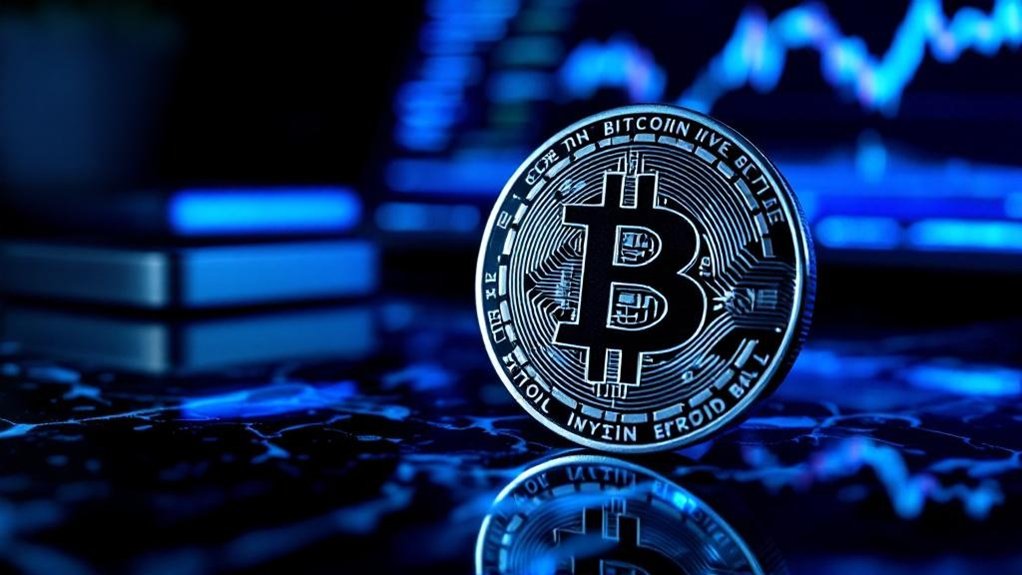DeFi is crypto’s rebellious offspring, built on Ethereum’s blockchain. It ditches middlemen completely. No banks. No brokers. Just peer-to-peer transactions governed by smart contracts nobody can mess with. Only 2.5% of people use it, mostly for investments that beat traditional savings rates. Your money moves anywhere, anytime. But beware—smart contracts get hacked, volatility kills gains, and regulators haven’t figured it out yet. The whole system’s still experimental, for better or worse.
Why are traditionalists losing sleep over a bunch of code?
The answer lies in DeFi—Decentralized Finance—a system that’s quietly dismantling the financial gatekeepers.
Built primarily on Ethereum’s blockchain, DeFi creates financial services without the middlemen.
DeFi eliminates the gatekeepers, letting code replace corporate bureaucracy in a financial system nobody owns but everyone can access.
No banks. No brokers. No permission needed. Just peer-to-peer transactions governed by self-executing smart contracts.
The backbone of this revolution is blockchain technology.
It serves as an immutable ledger where every transaction gets time-stamped and synchronized across the network.
Nobody controls it. Everybody verifies it.
The financial logic—loans, interest rates, asset swaps—all gets coded into smart contracts that execute automatically.
No human judgment or bias. Just cold, hard programming.
Users access these services through decentralized applications (dApps).
Got internet and a crypto wallet? You’re in. No credit checks. No ID verification. No “sorry, we’re closed on weekends.”
The system operates 24/7, globally, without discrimination. Traditional banks must be fuming.
The benefits are substantial.
Interest rates often outpace traditional savings accounts.
Assets move anywhere, anytime—no three-business-day nonsense.
Everything’s transparent on the public ledger.
You control your money. Completely. No bank can freeze your account because they don’t like your politics.
This creates a more open market where anyone with internet access can participate regardless of their background or location.
Currently, only 2.5% of the population uses DeFi, primarily for investment, trading, and savings management without traditional intermediaries.
Liquidity providers can earn passive income by depositing cryptocurrency pairs into liquidity pools that power decentralized trading.
But it’s not all crypto-utopia.
Smart contracts get hacked.
Some “decentralized” protocols aren’t actually that decentralized.
Volatility can wipe out gains in seconds.
Regulators are circling, unsure how to classify or control these borderless financial experiments.
And let’s be honest—the interfaces aren’t exactly grandma-friendly.
DeFi traces its roots to Bitcoin’s 2009 launch, but exploded when Ethereum introduced programmable smart contracts.
It’s still evolving, still experimental.
Still dangerous for the uninitiated.
But it’s forcing traditional finance to adapt or become obsolete.
Because code doesn’t care about tradition. It just executes.
Frequently Asked Questions
How Risky Are Defi Investments Compared to Traditional Finance?
DeFi investments carry substantially higher risks than traditional finance. Period.
With $712 million exploited in just half of 2025, security vulnerabilities are rampant.
No deposit insurance or central backstops here.
Flash loan attacks, cross-chain bridge failures, regulatory uncertainty—it’s the Wild West.
Sure, institutional participation is improving stability somewhat, but let’s be real.
When protocols collapse, investors lose everything.
Traditional finance has guardrails. DeFi has… hope and audits. Sometimes.
What Regulatory Challenges Does Defi Currently Face?
DeFi faces a regulatory minefield.
Operates in a gray area with unclear, inconsistent rules across jurisdictions.
Traditional financial laws just don’t fit its decentralized structure.
Regulators want KYC/AML protocols that clash with DeFi’s anonymous ethos.
Cross-border enforcement? Good luck with that.
New European regulations like MiCA demand compliance that threatens decentralization.
Meanwhile, consumer protection is basically non-existent.
Guess what happens when your tokens disappear? That’s right—you’re on your own.
Can Defi Platforms Be Hacked?
Yes, DeFi platforms absolutely get hacked.
The numbers are staggering.
Unverified smart contracts alone caused $630 million in losses.
Off-chain attacks represent 56.5% of DeFi hacks and a whopping 80.5% of funds lost in 2024.
North Korean hackers pulled off the largest crypto theft ever—$1.5 billion from ByBit in 2025.
Reentrancy bugs, oracle manipulation, compromised user accounts—the attack vectors are endless.
Audited protocols? They exist but are surprisingly rare.
How Does Defi Impact Global Financial Inclusion?
DeFi potentially addresses financial exclusion by providing services to the 1.5 billion unbanked adults worldwide.
No banks? No problem.
The technology enables anyone with internet access to borrow, lend, and transact—bypassing traditional gatekeepers.
It’s not all sunshine though.
Challenges exist: collateral requirements, technical complexity, and spotty internet access in developing regions.
Most current adoption? Speculative trading rather than practical inclusion.
The promise is there.
The reality? Still developing.
What Computing Skills Do I Need to Participate in Defi?
Basic DeFi participation requires minimal tech skills—just a crypto wallet and internet connection.
For deeper involvement, though? That’s where it gets interesting. Understanding blockchain fundamentals helps.
For serious players, programming knowledge (particularly Solidity) becomes essential. Web development skills and familiarity with tools like MetaMask are valuable too.
Advanced users might need experience with smart contracts and testing frameworks.
Not rocket science, but definitely not Facebook-level simple either.









